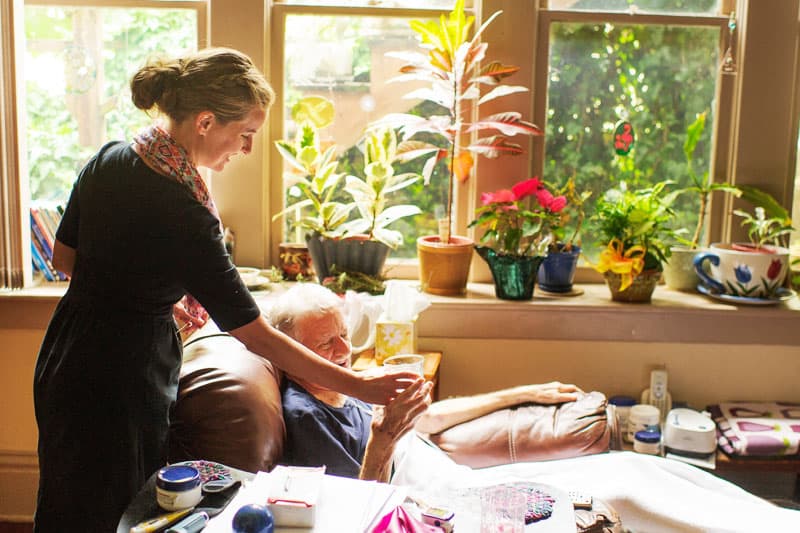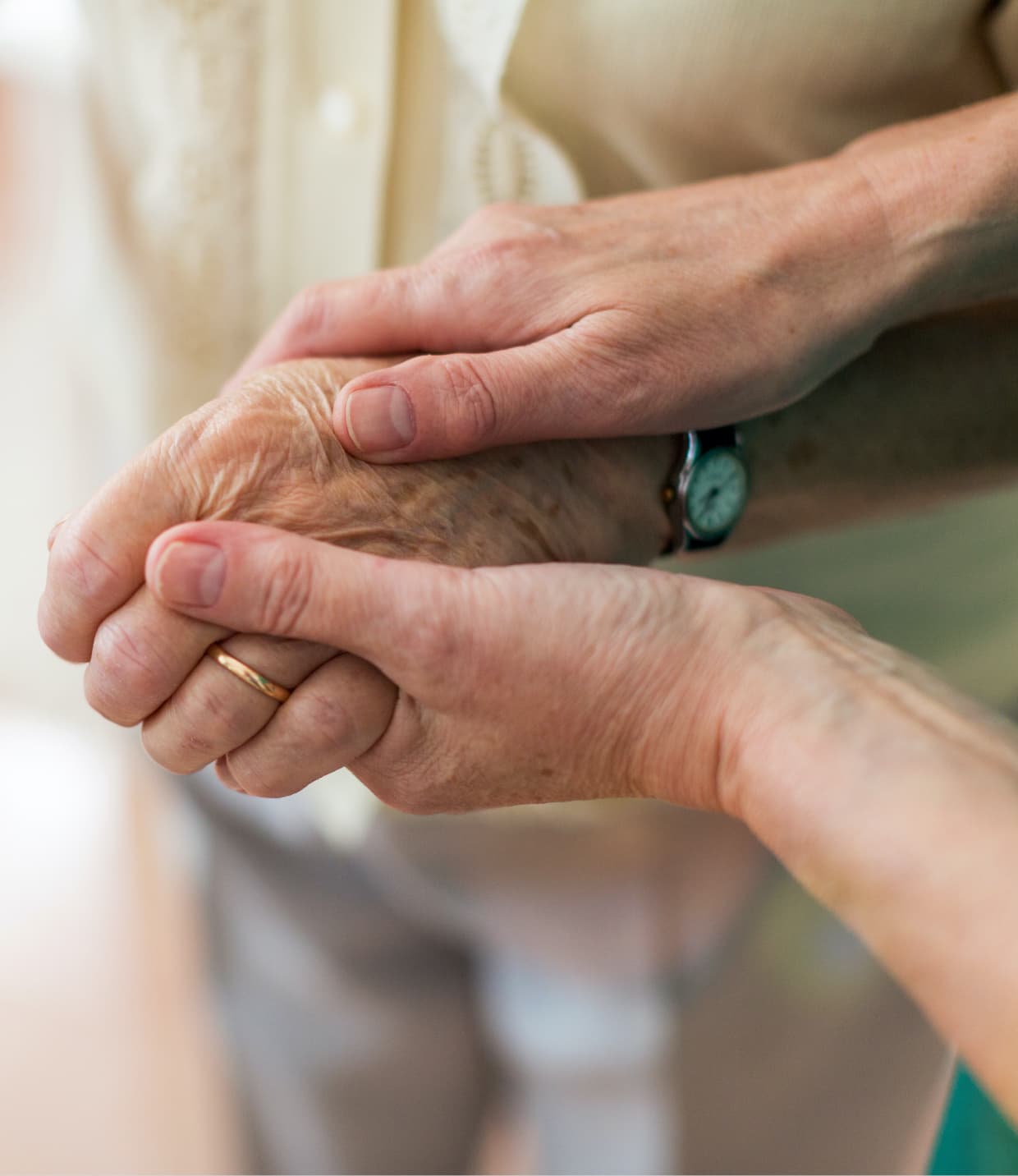Symptom control is the central goal of hospice care, which gives people facing a life-limiting illness the freedom to live the rest of their days with comfort, dignity and quality of life. Many people at the end of life have pain, and if it’s not managed well, it can make it hard to eat, sleep, and spend time with loved ones.
Amedisys hospice teams focus on caring for the whole person with expert medical care, including emotional, spiritual, and palliative care to address all types of discomfort and distress. Palliative care is also called comfort care.
Understanding End-of-Life Pain in Hospice Patients
At Amedisys Hospice, we believe pain is what the patient says it is. Managing end-of-life pain is a big part of the care we provide. Following the National Hospice and Palliative Care Organization (NHPCO) recommendations for comfort care includes: 1
- Checking for pain when the patient is admitted to hospice
- Ongoing pain assessments to monitor treatment
- Use of special pain assessment tools for patients who are nonverbal, non-English speaking, etc.
- Teaching families what to look for and when to call for help.
- Planning for medicine side effects
- Teaching other ways to help pain without using medicine.
Studies have shown this care works. One study showed 73-87% of patients experienced complete pain relief, with 99.8% of hospice patients experiencing partial or complete pain relief overall. 2
The first step in effective pain management is talking about it honestly and comprehensively with caregivers and the hospice care team. Some people don’t want to say they’re in pain, but being honest helps us to provide the best care.
During visits the nurse will ask questions like:
- What are your goals for pain management?
- What kind of pain are you feeling? Examples can include sharp, dull, burning, stinging, tender, nauseating, aching, etc.
- Where do you feel pain?
- How bad is the pain from 0 (no pain) to 10 (worst pain)?
- What helps the pain? (Lying down, pressure, deep breaths, etc.)
- What makes the pain worse?
- Does the pain stop you from doing things like sleeping or eating?
- Is it worse at certain times?
Family members and caregivers may notice non-verbal signs of pain, including agitation, changes in sleep patterns, poor appetite, being depressed or withdrawn, delirium or changes in breathing patterns. The hospice team will help educate caregivers on these signs and symptoms.
These answers and observations give the nurse working with the physician and interdisciplinary hospice team a plan to treat and manage pain.

Hospice Pain Management Medications
Pain medication, also sometimes called analgesic medication, is an important part of hospice care.
The hospice care team can make a pain medication regimen based on the patient’s goals. The medicines used can help with short-term or long-term pain. Each plan is specific to the patient and can vary by type, dose, and schedule.
The pain level and type will help your physician choose the right medication. The type or dose of medicine might change as the disease progresses. Some people. need over-the-counter drugs like anti-inflammatory medication while others need stronger medicines like mild narcotics or opioids.
Pain medication can be given by pill, liquid, patches, or other routes. Our hospice teams will always opt for the best route based on the patient’s condition.
It’s important that patients take pain medication as prescribed, even if they start feeling better. This helps keep pain from getting out of control.
Opioid Usage in Hospice Care
When milder medications aren’t enough to meet patients’ goals of pain management and comfort for the end of life, opioids, like morphine, hydromorphone or fentanyl, may be the best way to relieve severe pain.
Many patients and family members may feel concerned about the idea of using opioids. However, when used correctly and as prescribed, they can be effective in treating hospice patients with severe pain. The hospice care team, which includes the hospice physician, will monitor the patient when opioids are prescribed, and make changes as needed.
Non-Medication Tactics to Manage Pain
Pain medication is not the only answer to manage pain. There are other ways to manage pain combined with a medication regimen.3 Your hospice team may suggest:
- Massage
- Physical or occupational therapy
- Relaxation or meditation
- Heat or cold packs
- Alternative therapies like acupuncture
It’s also important to remember emotional pain. Being at the end of life can be sad and scary. It can cause severe depression and anxiety. Hospice can help with this too. Evidence suggests that as many as 77% of hospice patients experience depression.4 Hospice care focuses on so much more than just physical pain.
Social workers can help ease anxiety by helping with end-of-life planning, providing resources and tools, counseling, and referring to community resources if needed.
Chaplains, or spiritual counselors, work to assess the patient’s and family’s spiritual needs and create a plan of care to meet those needs.
Sometimes, just a nice visit and chat makes a world of difference. Our hospice volunteers provide a range of support, from reading at the bedside to pet therapy to helping with light administrative duties.
Benefits of Effective Pain Management in Hospice
Pain control can make a big difference at the end of life. Hospice care is about empowering patients and their families to live their final days how they want to, without the burden of pain.
At Amedisys, hospice care starts with goal setting. How do you want to live your final days? Are there bucket list items you need help achieving?
Treating pain helps patients meet those goals and can:
- Improve mood
- Increase activity tolerance
- Increase independence
- Help avoid ER visits and unnecessary hospitalizations
- Offer family caregiver relief
- Support overall improvement in quality of life
Is hospice care right for you or your loved one? Contact one of our care centers to speak to one of our hospice specialists.
Kimberly VanGilder, RN, is a Hospice Clinical Education Specialist for Amedisys. She has been a nurse for 15 years, discovering early in her career that hospice was both her calling and her passion. Kimberly strongly believes in the value of education and finds great fulfillment in learning and sharing knowledge with others.
References |





